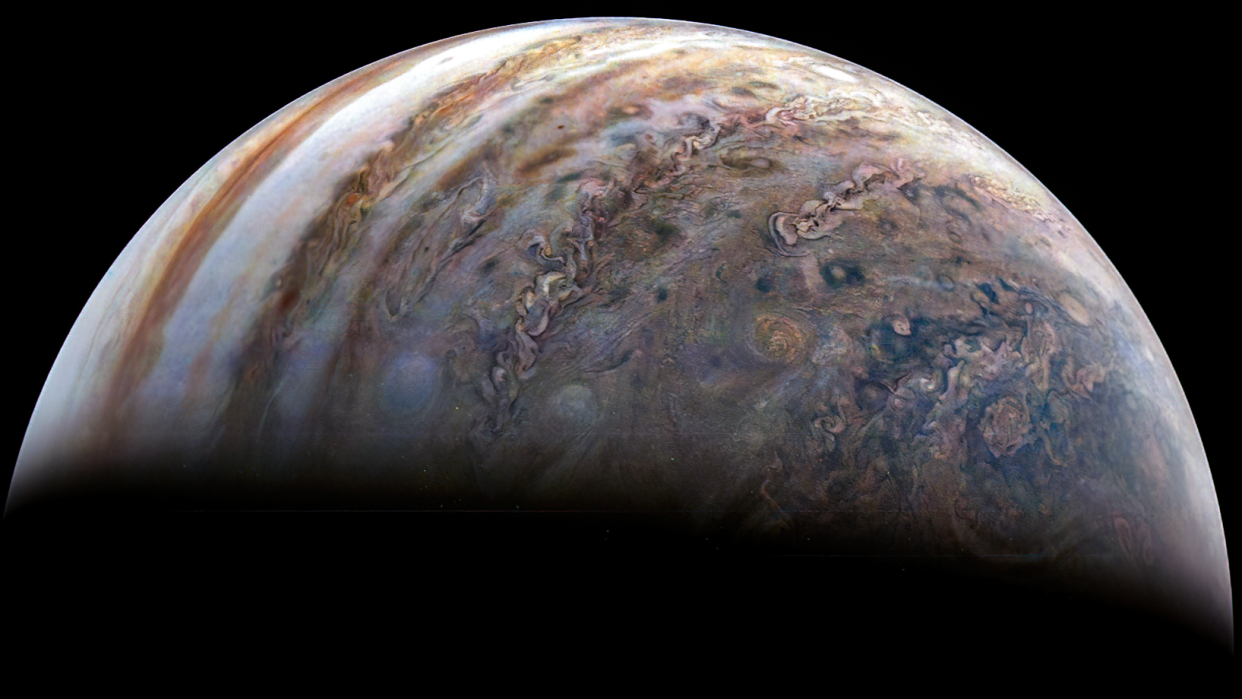NASA loses more than 200 Jupiter photos after Juno probe camera glitch

For the second flyby in a row, a key camera studying Jupiter has struggled to snap photos as usual.
NASA's Juno spacecraft launched in 2011 and arrived at Jupiter in 2016; since then, it has made nearly 50 flybys of the largest planet in our solar system and caught valuable glimpses of Jupiter's large moons, each a strange world in its own right. But during the spacecraft's most recent flyby, on Jan. 22, the camera was able to capture only about one-fifth of the planned images.
A similar issue occurred on the previous flyby, in December; mission personnel believe that the camera glitch stems from the camera reaching an unusually high temperature and are continuing to troubleshoot the issue, according to a statement.
Related: Jupiter's true colors pop in new images from NASA's Juno mission
Shortly after the Dec. 14 flyby, Juno experienced a memory issue that sent the spacecraft into safe mode, delaying the transmission of data to Earth, according to a statement at the time. Juno bounced back smoothly and most of the data reached Earth safely, but JunoCam struggled early in the flyby.
The camera had been directed to capture 90 images during the December flyby, but the first four photos turned out badly. The mission team determined that when JunoCam turned on, temperatures rose enough to interfere with photography and the instrument had cooled off by the end of those first four images.
But now, the issue seems to have recurred, this time for longer — 23 hours rather than 36 minutes, according to NASA. This time, the glitch left 214 images unusable, with only 44 decent images returned after the instrument cooled sufficiently.
"The mission team is evaluating JunoCam engineering data acquired during the two recent flybys — the 47th and 48th of the mission — and is investigating the root cause of the anomaly and mitigation strategies," NASA officials wrote. "JunoCam will remain powered on for the time being and the camera continues to operate in its nominal state."
Juno's next flyby will occur on March 1.
Related stories:
— NASA spacecraft snaps gorgeous new photo of Jupiter's moons Io and Europa
— Juno spacecraft snaps gorgeous photo of Jupiter's atmosphere, 2 big moons
— Jupiter is a whirling world in stunning (and woozy) footage from Juno spacecraft
Mission personnel considered launching Juno without a camera onboard, since the spacecraft's science goals didn't require such an instrument, but the agency decided to add JunoCam as a public outreach project. The color camera snaps photos of the tops of Jupiter's dynamic clouds, with the public suggesting where to aim and processing the collected images.
And JunoCam wasn't guaranteed to last even this long, according to NASA: It was designed to survive just seven passes through the dangerous environment surrounding Jupiter.
Juno itself is also operating beyond its primary mission, which ended in July 2021; it is currently expected to continue as long as September 2025.
Email Meghan Bartels at mbartels@space.com or follow her on Twitter @meghanbartels. Follow us on Twitter @Spacedotcom and on Facebook.

